Best Marine Varnishes in 2024
When it comes to protecting and enhancing the beauty of wood surfaces on boats, marine varnishes are the go-to solution for boaters and marine enthusiasts. Check our top choices:
Our pick
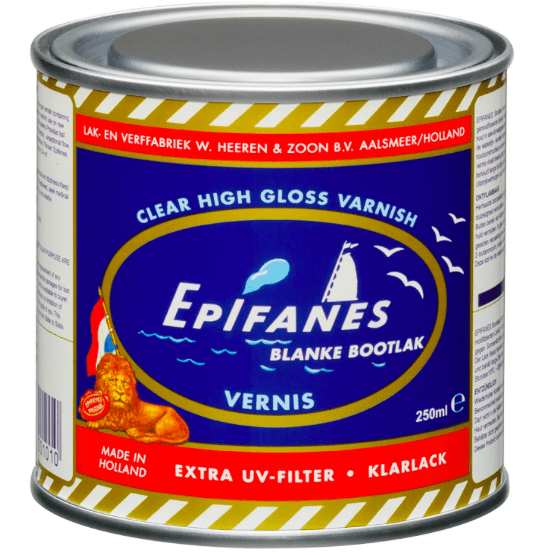
Our Score:
4.8/5
Also good
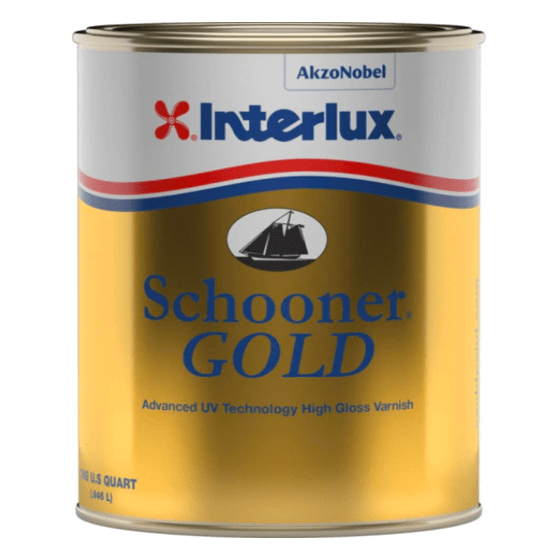
Our Score:
4.4/5
Most reviewed
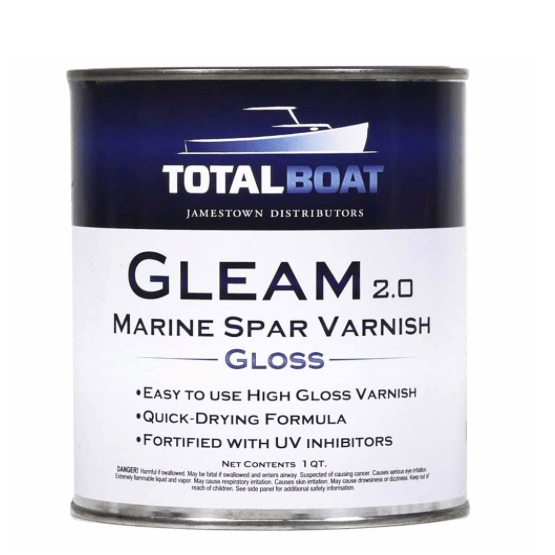
Our Score:
4.6/5
Top 5 Best Marine Varnishes
Determining the best marine varnish involves considering various factors such as durability, UV resistance, ease of application, and overall performance. While personal preferences and specific project requirements may vary, there are several marine varnishes that consistently receive positive reviews and are commonly regarded as top choices:
- Epifanes Clear Varnish
- Interlux Schooner Varnish
- TotalBoat Gleam Marine Spar Varnish
- Pettit Captain’s Varnish
- Epifanes Wood Finish Gloss
1. Epifanes Clear Varnish
Our pick

Epifanes is well-known for producing high-quality marine varnishes. Their clear varnish offers excellent protection against UV rays, water, and weathering. It is highly durable and provides a glossy, smooth finish. Epifanes varnishes are known for their ease of application and ability to enhance the natural beauty of wood.
Pros
Cons
2. Interlux Schooner Varnish
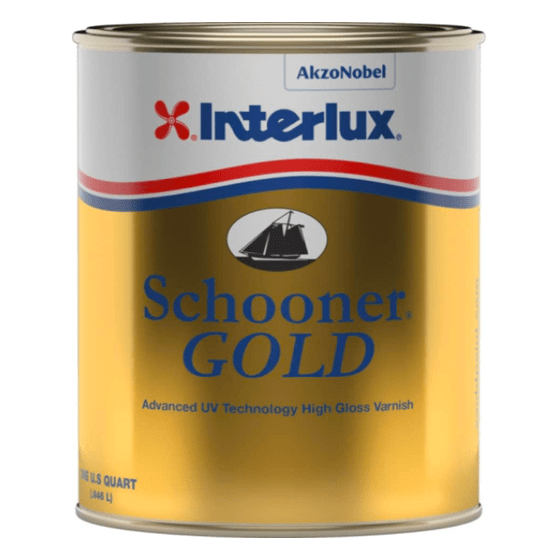
Interlux Schooner Varnish is a popular choice among boaters. It offers superior gloss retention, UV resistance, and long-lasting protection. This varnish provides a rich, high-gloss finish and is easy to apply. It is suitable for both interior and exterior wood surfaces.
Pros
Cons
3. TotalBoat Gleam Marine Spar Varnish
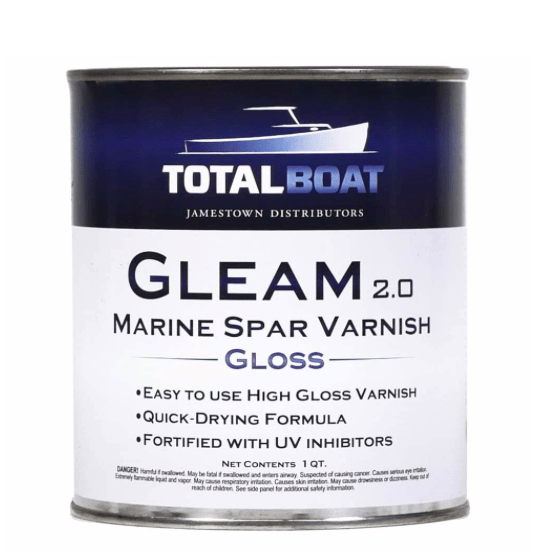
TotalBoat Gleam Marine Spar Varnish is a high-quality, high-gloss varnish that provides excellent protection for wood surfaces. It is formulated to resist UV damage, water, and weathering, making it ideal for marine environments. The varnish is self-leveling and offers a durable, clear finish.
Pros
Cons
4. Pettit Captain’s Varnish

Pettit Captain’s Varnish is a traditional marine varnish that has stood the test of time. It offers superior protection against the elements and has excellent flexibility, making it ideal for wooden boats. This varnish provides a rich, amber finish and is known for its durability and long-lasting performance.
Pros
Cons
5. Epifanes Wood Finish Gloss
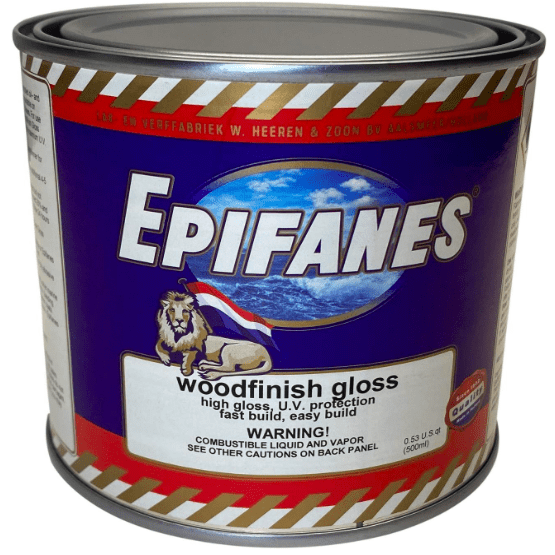
Epifanes Wood Finish Gloss is a high-build varnish that offers exceptional UV protection and durability. It provides a beautiful, high-gloss finish and is resistant to water, chemicals, and abrasion. This varnish is renowned for its long-lasting performance and ease of application.
Pros
Cons
TIP: Properly prepare the wood before applying it. The wood should be clean and free of debris, and any existing coatings should be completely removed. Sand the wood lightly with a fine-grit sandpaper and then apply the varnish in thin, even coats, allowing each coat to dry fully before applying the next. Use a natural-bristle brush when applying the varnish and to avoid overworking the varnish to minimize brush marks. Follow manufacturer instructions for the number of coats and drying times for best results.
Best Marine Grade Polyurethane
The best marine grade polyurethane is one that is specifically designed and formulated for use in marine environments. It should be water resistant, UV resistant, and have a high level of abrasion and wear resistance. To complement it You might think of teak sealers that will help a lot. It should also have excellent adhesion qualities and be able to withstand extreme temperatures, salt water, and humidity. It should be easy to apply and have a long-lasting finish.
There are a few top choices known for their durability, protection, and overall performance in marine environments. Here are three highly regarded marine-grade polyurethane options:
- Epifanes Clear Gloss Varnish: Epifanes is a renowned brand in the marine industry, and their Clear Gloss Varnish is highly regarded for its excellent UV resistance, weather resistance, and long-lasting protection. It provides a beautiful high-gloss finish, enhances the natural wood beauty, and offers exceptional durability against the harsh marine elements.
- TotalBoat Lust Marine Varnish: TotalBoat Lust Marine Varnish is another popular choice known for its exceptional performance. It offers a clear, high-gloss finish that enhances the wood’s appearance and provides excellent UV protection. This varnish is formulated to resist cracking, peeling, and yellowing, ensuring long-lasting protection for your boat’s wood surfaces.
- Interlux Schooner Varnish: Interlux Schooner Varnish is a traditional marine-grade polyurethane varnish that has stood the test of time. It offers outstanding protection against UV rays, saltwater, and harsh weather conditions. This varnish provides a high-gloss finish, enhances the natural wood grain, and offers excellent durability for marine applications.
Good marine grade polyurethane should be non-toxic and safe for the environment, as well as being durable enough to withstand harsh weather and UV radiation. The best polyurethanes should also provide a smooth, glossy, and attractive finish, as well as being easy to clean and maintain. It should be able to stand up to the constant exposure to water, salt, and sun, as well as being resilient enough to withstand bumps, knocks, and scrapes. It should be affordable and easy to find.

Types of Marine Varnish
Marine varnish is a type of coating that is used to protect wood, metal, and other surfaces from the elements. It provides a hard, durable finish that is resistant to UV rays, water, and other environmental conditions. There are several types of marine varnish available, including alkyd, phenolic, and polyurethane.
- Traditional Spar Varnish: Traditional spar varnish is a popular choice for marine applications due to its excellent durability and UV resistance. It typically contains a blend of natural resins, such as tung oil or linseed oil, combined with phenolic or alkyd resins. Spar varnishes are known for their high gloss finish and ability to withstand harsh weather conditions.
- Two-Part Polyurethane Varnish: Two-part polyurethane varnishes provide exceptional durability and protection against UV rays and saltwater. These varnishes consist of a resin and a hardener, which must be mixed before application. They offer a high-gloss finish, excellent abrasion resistance, and are often considered the most durable option for marine applications.
- Water-Based Varnish: Water-based varnishes have gained popularity due to their low VOC (volatile organic compound) content and ease of application. These varnishes offer good protection against UV rays and are generally more environmentally friendly. They dry faster than traditional varnishes and provide a clear, satin, or matte finish.
- Epoxy Varnish: Epoxy varnishes are known for their exceptional durability and moisture resistance. They are often used as an undercoat or primer before applying a final varnish layer. Epoxy varnishes can penetrate the wood, providing excellent adhesion and protection against moisture intrusion.
- Spar Urethane Varnish: Spar urethane varnishes combine the durability and UV resistance of polyurethane with the flexibility and moisture resistance of traditional spar varnishes. These varnishes offer good protection against weathering and are suitable for both interior and exterior marine applications.
Alkyd varnishes are more commonly used for interior wood and metal surfaces, while phenolics and polyurethanes are often used for exterior surfaces. Each type of marine varnish has its own characteristics and benefits, so it is important to select the right one for the job.
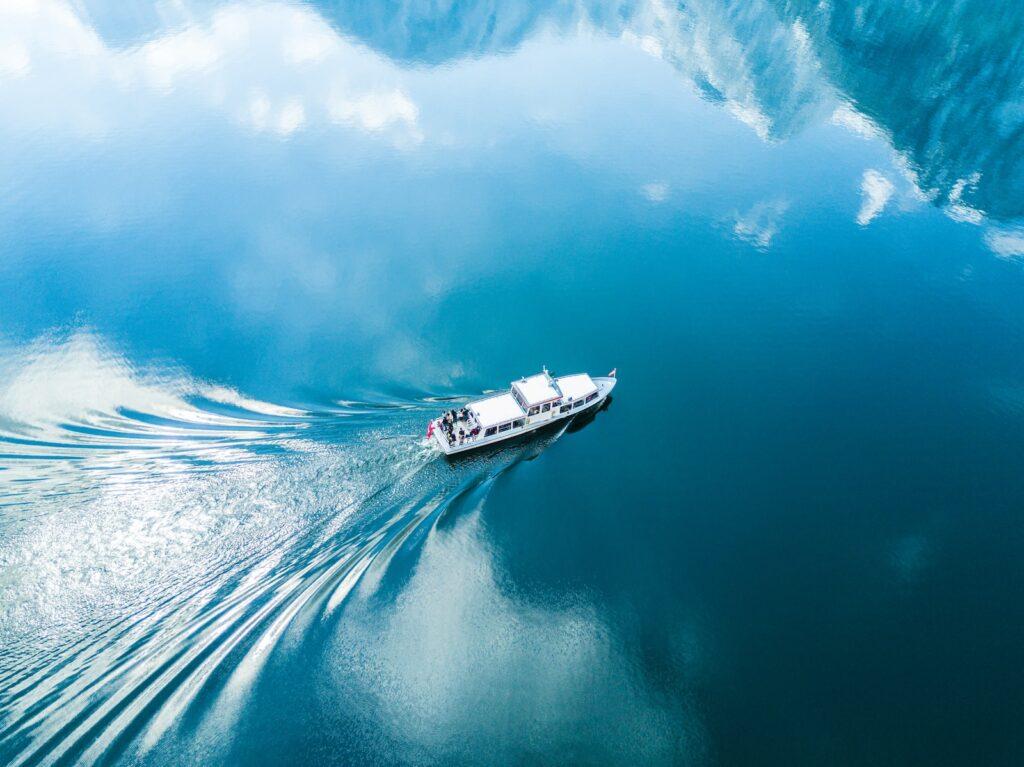
Alkyd Marine Varnish
Alkyd marine varnish is the traditional choice for marine applications. It is generally more affordable than polyurethane and is easier to apply. Alkyd marine varnish is also more flexible than polyurethane and is better at resisting cracking and peeling.
Pros
- More affordable than polyurethane
- Easier to apply
- More flexible than polyurethane
- Better at resisting cracking and peeling
Cons
- Does not have as good UV protection as polyurethane
- Can yellow over time
- Not as resistant to mildew and fungus
Alkyd Marine Varnish is a type of wood finish that is designed to protect wood surfaces on boats and other marine vessels from the harsh elements of the ocean. It is made from a resin that is highly resistant to UV rays, salt water, and moisture, making it ideal for outdoor use. Alkyd Marine Varnish is easy to apply and provides a beautiful, glossy finish that is sure to protect your boat for years to come.
Polyurethane Marine Varnish
Polyurethane marine varnish is the newer, more modern version of marine varnish. It is more expensive than alkyd, but it is also much more durable. Polyurethane marine varnish has excellent UV protection and is more resistant to mildew and fungus.
Pros
- Excellent UV protection
- More resistant to mildew and fungus
- More durable than alkyd
- Does not yellow over time
Cons
- More expensive than alkyd
- More difficult to apply
- Not as flexible as alkyd
Polyurethane marine varnish is a protective coating used on wood surfaces that are exposed to marine environments. It is typically used on boats or other items that are exposed to saltwater, sun, and moisture. Polyurethane marine varnish is designed to provide superior protection against the elements, with a high level of UV protection and water resistance. This type of varnish also offers a beautiful finish that is easy to apply and maintain.
Choosing the Best Marine Varnish
When choosing the best marine varnish, it is important to consider the application and environment. If the wood is exposed to direct sunlight and harsh elements, it is best to choose a polyurethane marine varnish. If the wood is not exposed to direct sunlight and harsh elements, an alkyd marine varnish may be the better choice.
Look for a marine varnish that offers excellent durability to withstand the harsh conditions encountered in a marine environment. It should be resistant to UV rays, saltwater, moisture, and temperature fluctuations.
UV resistance is crucial to prevent the varnish from fading, yellowing, or degrading under prolonged exposure to sunlight. Opt for a varnish with high UV resistance to maintain the appearance and integrity of your wood surfaces.
Consider the desired level of gloss for your wood surfaces. Marine varnishes typically offer a range of gloss options, from high gloss to satin or matte finishes. Choose a varnish that aligns with your aesthetic
Look for a marine varnish that is easy to apply, even for individuals with limited experience. Consider factors such as brushability, self-leveling properties, and whether it requires thinning or multiple coats for proper coverage.
The drying time of the varnish is an important consideration, especially if you have time constraints or need to complete the project within a specific timeframe. Some varnishes have quicker drying times, while others may require longer curing periods.
Ensure that the marine varnish you choose is compatible with the type of wood you are working with. Different varnishes may have specific recommendations for use on particular wood species, so verify compatibility before application.
Consider the ease of maintenance and repair for the varnish. Look for a varnish that allows for easy touch-ups or refinishing without requiring complete stripping and reapplication.
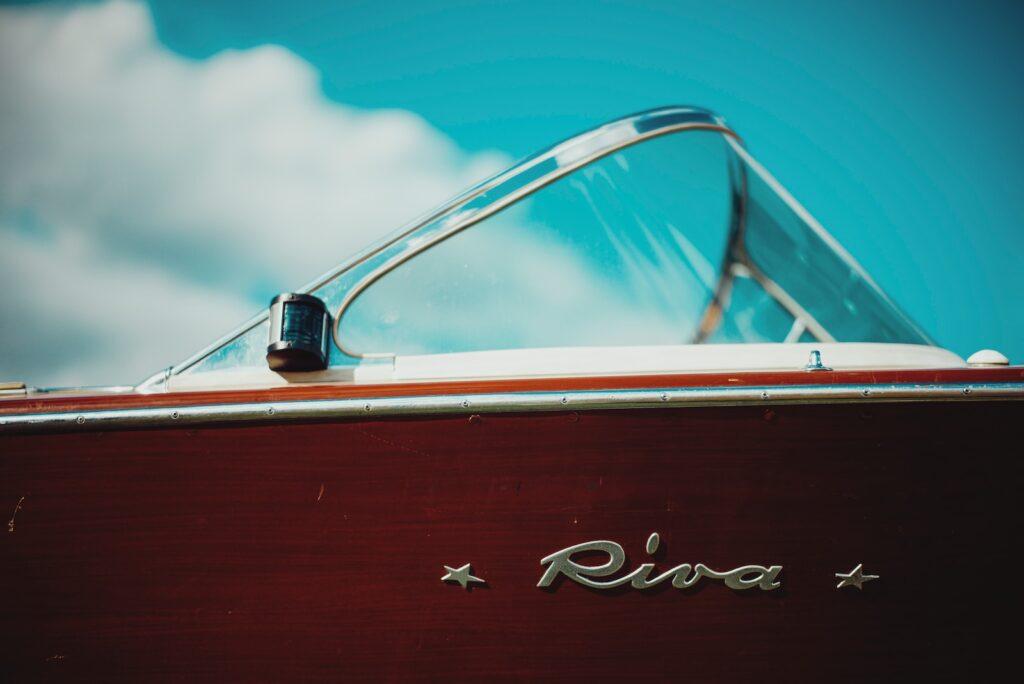
Application
When applying marine varnish, it is important to follow the manufacturer’s instructions. Marine varnish must be applied in thin, even coats for best results. A foam brush or roller is the best way to apply the varnish, as it will help prevent any drips or runs. The varnish should be allowed to dry completely between coats, and the number of coats will depend on the type of varnish being used.
Preparing the Surface
Before applying the marine varnish, it is important to properly prepare the surface. The wood should be sanded with a fine grit sandpaper and all debris should be removed. The wood should also be wiped down with a damp cloth to remove any dust or dirt. Any flaws in the wood should be filled in with a wood filler before applying the marine varnish.
Applying the Marine Varnish
Once the wood is prepared, the marine varnish can be applied. It is important to work in a well-ventilated area and to wear protective clothing, such as gloves and a respirator mask. A foam brush or roller is the best way to apply the varnish, as it will help prevent any drips or runs. The varnish should be allowed to dry completely between coats, and the number of coats will depend on the type of varnish being used.
Maintenance and Repair
To keep marine varnish looking its best, it is important to perform regular maintenance and repairs. The wood should be cleaned regularly with a mild soap and water solution. If the wood becomes scratched or damaged, it should be sanded and re-varnished.
Repairing Scratches
Scratches in the marine varnish can be repaired by sanding them with a fine grit sandpaper and then re-varnishing the area. It is important to use a fine grit sandpaper, as a coarse grit sandpaper can damage the wood.
Repairing Cracks
Cracks in the marine varnish can be repaired by applying a flexible adhesive to the crack and then re-varnishing the area. It is important to use a flexible adhesive, as it will help prevent the crack from returning.
What is the best varnish for a boat?
The best varnish for a boat depends on the type of wood and the desired finish. Generally, for outdoor use, a high-quality marine spar varnish is recommended. It is typically a long-lasting, protective finish that will retain its gloss and flexibility in the harsh marine environment. When applying any varnish, it is important to ensure the wood is properly prepared and the varnish is applied correctly in multiple thin coats.
When selecting a marine spar varnish, consider the climate you are in, as some are better suited to warm and humid climates and others to cold climates. Also consider any specific needs you have, such as UV protection or a high-gloss finish. It is often beneficial to choose a varnish that contains UV inhibitors and mildewcides to protect your boat from the elements. Look for a varnish that is easy to apply, has good adhesion and is resistant to cracking, peeling and yellowing.
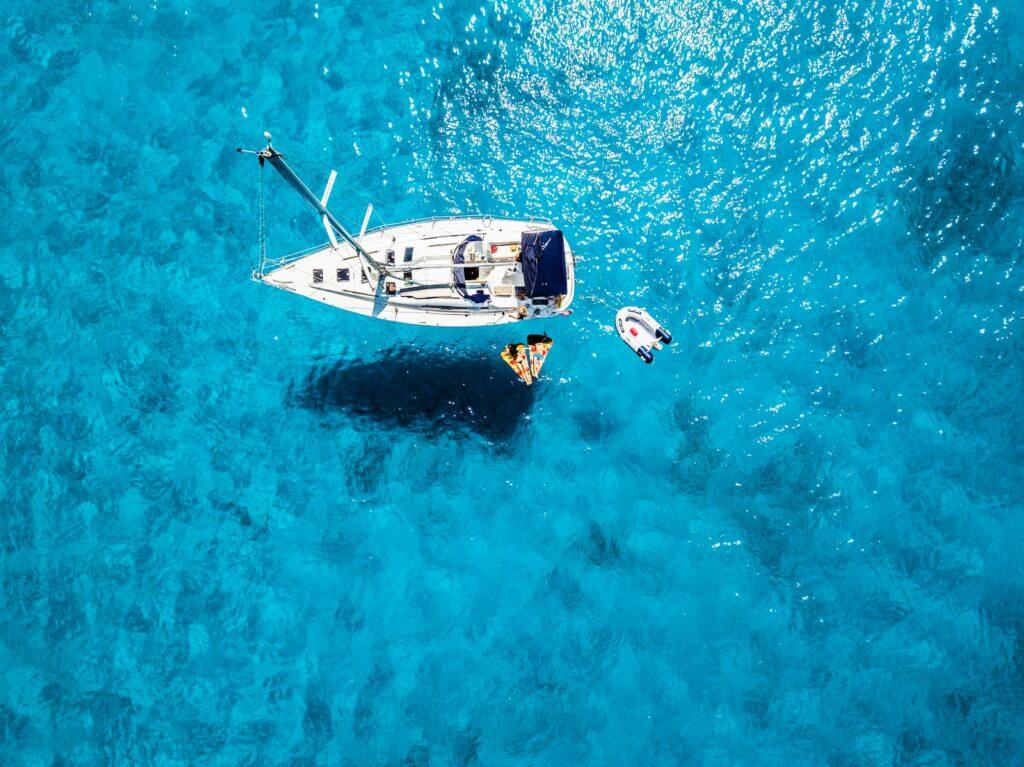
What is the hardest marine varnish?
The hardest marine varnish is a varnish that contains high amounts of UV absorbers, chemical stabilizers and alkyd resins. This combination of ingredients provides a harder and more durable finish that is resistant to cracking, fading and discoloration over time. It also provides superior protection from saltwater and other environmental elements.
It is also formulated to be resistant to abrasion and wear, making it an ideal choice for boats and other marine applications. It is also commonly used on outdoor furniture, shutters, and other exterior surfaces that are exposed to the elements. This type of varnish is also often used on masts and spars, as it provides excellent protection against ultraviolet radiation and oxidation.
What is the best marine varnish for wood?
Determining the best marine varnish for wood depends on various factors such as gloss level, durability, and UV resistance. Some top choices in the market include Epifanes Clear Varnish, Interlux Schooner Varnish, and TotalBoat Lust Marine Varnish.
Epifanes Clear Varnish is renowned for its high gloss finish and excellent UV resistance. Interlux Schooner Varnish offers durability and a beautiful amber hue that enhances the natural beauty of wood. TotalBoat Lust Marine Varnish is known for its easy application, long-lasting protection, and exceptional gloss retention. Consider your specific needs and preferences to choose the marine varnish that best suits your project and provides optimal protection for your boat’s wood surfaces.
FAQs
What is the difference between marine varnish and regular varnish?
Marine varnish is specifically formulated to withstand the harsh conditions encountered in marine environments, such as exposure to UV rays, saltwater, and moisture. It offers enhanced durability and protection compared to regular varnishes, making it suitable for boat applications.
How many coats of marine varnish should I apply?
The number of coats required can vary depending on the specific marine varnish and the condition of the wood surface. In general, it is recommended to apply multiple thin coats rather than a single thick coat. This helps achieve proper coverage, improves adhesion, and allows for better control over the finish.
Can I apply marine varnish over an existing finish?
It is possible to apply marine varnish over an existing finish, provided that the surface is properly prepared. The existing finish should be clean, dry, and free from any loose or flaking material. Light sanding or stripping may be necessary to create a suitable surface for the marine varnish to adhere to.
